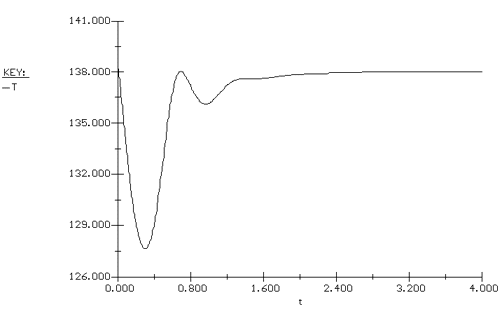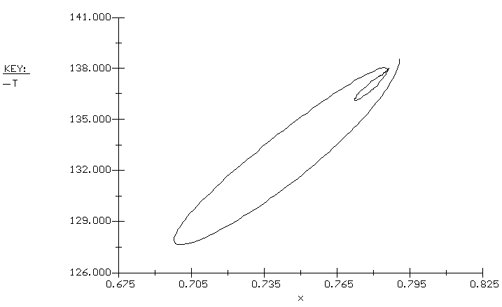Chapter 13: Unsteady State Nonisothermal Reactor Design
Example DVD13-4: Proportional Integral Control
Repeat Example CDE13-2 using a proportional-integral controller instead of only an integral controller. |
||
Solution |
||
We note that while the output temperature returns to 138°F, the temperature oscillates over a 20°F range, which may be unacceptable in many situations. To overcome this we will add proportional to integral control. The equations here to be added to those in Table CDE13-2.1 to represent the PI controller are |
||
|
|
(CDE13-4.1) |
|
with the exception of the perturbation variable and the variable being controlled. (Note that all equations are the same as before.) |
|
Polymath Program 
Figure CDE13-4.1
Figure CDE13-4.2 |


